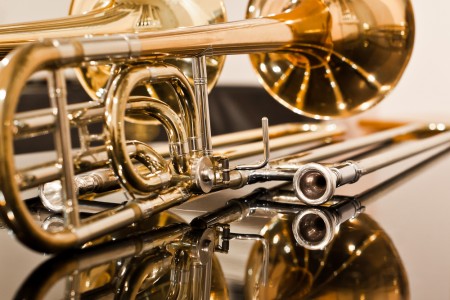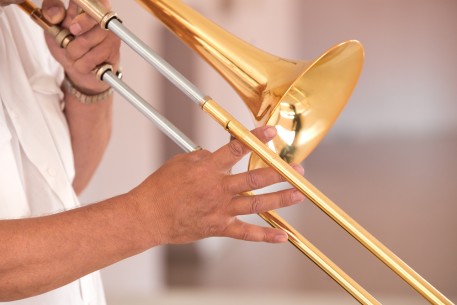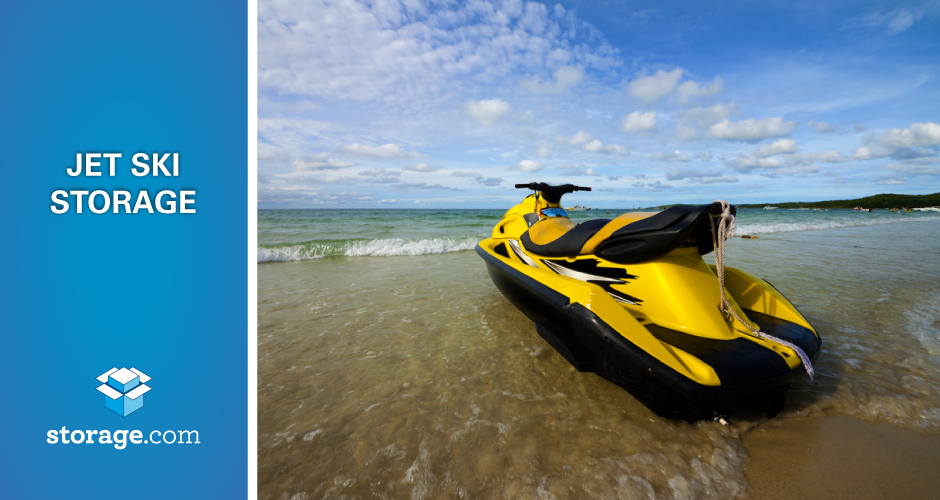By Patrick Galvan, Storage.com
As a trombonist, you’ll rarely need to take your prized horn out of your home or the studio. However, if you’re renovating your home, moving to a new home, or traveling for a performance, you might have to use a storage unit to temporarily store your trombone. No matter how long you intend to store your trombone, be sure to clean it, put it in its case, and find the right storage conditions before moving it to storage.
Cleaning Your Trombone
Cleaning the moving parts of a musical instrument is important when maintaining its quality, and a trombone is no exception. If a trombone’s slides, valves, or receivers get stiff due to lack of cleaning, the instrument won’t play as it should. In a worst-case scenario, the trombone’s parts may even require significant repairs.
 “The one area that’s probably most important to thoroughly clean for extended storage would be the hand slide and tuning slide,” says Kurt Witt, Director of Marketing for Woodwind & Brasswind in Westlake, Calif. “A simple wipedown with a towel or polishing cloth should suffice.”
“The one area that’s probably most important to thoroughly clean for extended storage would be the hand slide and tuning slide,” says Kurt Witt, Director of Marketing for Woodwind & Brasswind in Westlake, Calif. “A simple wipedown with a towel or polishing cloth should suffice.”
Even if you’re only storing your trombone for a few days or weeks, it’s a good idea to clean the instrument. That way, when you take it out of self storage, it will be in the same condition you left it in.
Storing Your Trombone in Its Case
Keeping a trombone clean is essential, but preserving its physical condition is imperative. If the instrument gets dented or deformed, it won’t play correctly—and the only way to get it back into playing shape is to repair or replace it, both of which are expensive options.
According to Rachel Rzymek, Marketing Coordinator for Compass Self Storage, an instrument should always be stored in a case to avoid damages. “Brass instruments are more durable than string instruments,” she says. “But like [string instruments], they must also be moved and stored in their proper cases.”
Each case is designed to hold its particular trombone model and will ensure it remains safe. “Trombone cases tend to be catch-all places to store mouthpieces, mutes, cleaning supplies, etc.,” Witt adds.
“Nothing is worse than opening up your case only to find your mouthpiece has become dislodged from the holder and is now falling around inside the case and even damaging the instrument.”
Kurt Witt, Director of Marketing for Woodwind & Brasswind
You should also disassemble your trombone before storing it, as leaving parts assembled and jammed into a case could lead to permanent damage. “Nothing is worse than opening up your case only to find your mouthpiece has become dislodged from the holder and is now falling around inside the case and even damaging the instrument,” says Witt. For this reason, he advises making sure these pieces are “secure inside the case before moving the trombone into long-term storage.”
Finding the Right Storage Environment for Your Trombone
Something to remember when storing your trombone is how the climate affects the instrument. Obviously, as a musician, you know that heat and cold will change the tuning of your instrument. But what about the instrument’s metal? Though trombones are more resilient compared to most instruments—especially wind instruments—the brass components can still be damaged by heat and humidity over time, which leads to rust. Because of this, you may want to rent a climate-controlled storage unit.


Another reason why climate-controlled storage is smart with trombone storage is because you won’t have to wait for the instrument to warm up or cool down before playing it (Witt recommends this to anyone not using climate control). In situations where you have a practice session or performance right after grabbing the instrument from self storage, climate control will ensure it’s ready to play.
Also, when it comes to storing your trombone, unit size shouldn’t be a major concern, as a trombone can easily fit in a 5×5 unit or be stored with other items in a larger unit. “The area of the [storage space] isn’t so much an issue as stacking is,” Rzymek says. “We highly recommend not stacking the instruments.”
When you stack items in self storage, there’s always the possibility that they may fall and get damaged. Even if your trombone is in its case, a hard enough fall could still damage it. If you need to organize your storage unit to get more space, consider setting up shelves instead of stacking items. That way, you save room and reduce the risk of accidentally knocking your trombone over.
If you invest the time and care needed to keep your trombone in good condition, whether it’s in short-term storage or long-term storage, you can maintain its quality for years.





